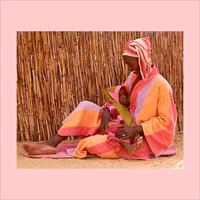UNICEF: Report highlights risk of maternal mortality in developing world

Nearly all maternal deaths occur in developing countries; over 80 per cent in sub-Saharan Africa and South Asia
A new report on maternal mortality, released by UNICEF today, highlights the risks faced during pregnancy and childbirth by women in developing countries.
Progress for Children: A Report Card on Maternal Mortality states that, according to the latest data, more than 99 per cent of all maternal deaths occur in developing countries, with some 84 per cent concentrated in sub-Saharan Africa and South Asia.
“The tragic fact is that every year more than half a million women lose their lives as a result of complications due to pregnancy or childbirth,” said Peter Salama, UNICEF’s Chief of Health. “The causes of maternal mortality are clear – as are the means to combat them. Yet women continue to die unnecessarily.”
Haemorrhage is the most common cause of death, particularly in Africa and Asia. A woman’s overall health – including her nutritional level and HIV status – also influences the chances of a positive outcome to her pregnancy and childbirth. Other influences include societal factors, such as poverty, inequity and general attitudes towards women and their health. Maternal mortality rates are often impacted by cultural or traditional practices that often prevent women from seeking delivery or post-partum care.
In the developing world, the risk of death from complications relating to pregnancy and childbirth over the course of a woman’s lifetime is one in 76, compared with one in 8,000 in the industrialized world. The riskiest place to give birth is Niger, where that risk is estimated to be one in seven.
Most maternal deaths are avoidable. A key to avoiding them is better health care – particularly during pregnancy, delivery and in the post-partum period. Interventions that improve maternal health include: antenatal care, provider-initiated HIV testing and counseling, skilled attendance at birth, emergency obstetric care, post-partum care and family planning in keeping with national policies. When offered across a continuum of care that integrates home, community, outreach and facility-based services, these interventions can have multiple benefits for mothers, children and the communities in which they live.
There have been some promising areas of improvement in maternal health interventions in recent years. Coverage of antenatal care throughout the developing world has increased by 15 percentage points in the past decade, with 75 percent of expectant mothers now receiving some antenatal care. At the same time, many countries have boosted coverage of skilled delivery attendance. In parts of Asia, for example, the proportion of women who have a skilled attendant present during delivery jumped from 31 to 40 percent between 1995 and 2005. Increases have also been seen in many African countries. Ensuring that skilled personnel are present at all deliveries and that these personnel have access to emergency care where necessary is the most effective means of saving the lives of mothers.
However the pace of progress towards reaching the Millennium Development Goal on maternal health, which calls for a 75 per cent reduction in the maternal mortality ration between 1990 and 2015, has been too slow throughout the developing world and must now be accelerated if the goal is to be reached.
To achieve the MDG target, maternal health must be addressed as part of a continuum of care that connects essential maternal, newborn and child health services. Indeed, levels of maternal mortality often reflect the overall performance of a country’s national health system – particularly during delivery and in the postnatal period, when mothers and newborns are most vulnerable. To fill this critical gap, services that benefit both mother and child need to be scaled up, as the health of the mother is closely linked to that of her newborn.
“Saving mothers’ lives is not only a moral imperative, but a sound investment that benefits their children, their families, their communities and their countries,” said Tessa Wardlaw, UNICEF’s Chief of Statistics and Monitoring. “Indeed, there is a clear connection between maternal health and other Millennium Development Goals, such as eradicating extreme poverty, reducing child mortality, and combating HIV and AIDS and other diseases.”
 Back and Next - Back and Next
Back and Next - Back and Next See Also - See Also
See Also - See Also